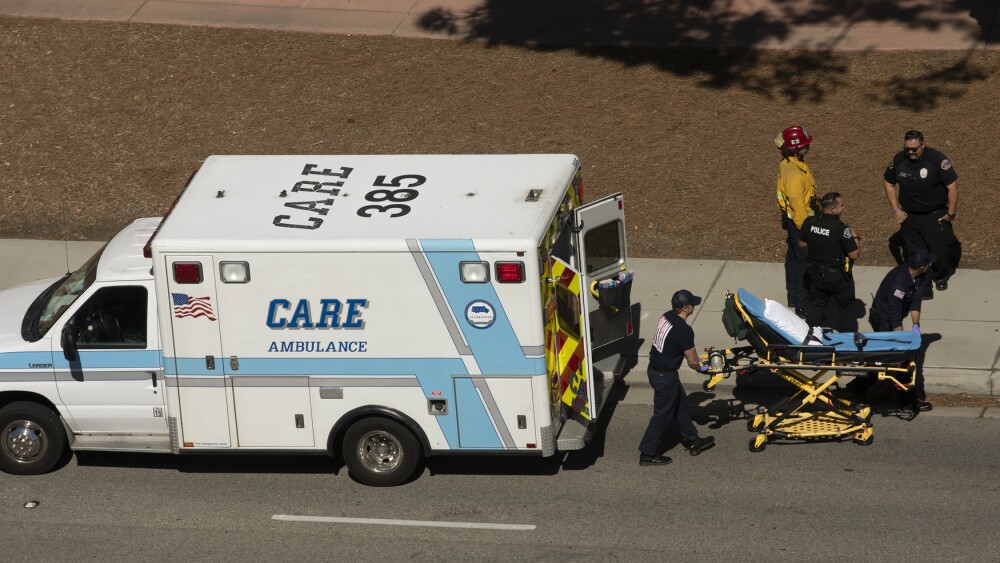Active shooter/killers – and I use this term because these killers do not just shoot, they also stab, bomb, poison and drive over their victims – generally progress through five phases:
- Fantasy Phase. They dream, write, draw and fantasize about killing
- Planning Phase. They write out the who, what, when, where, how of the planned event
- Preparation Phase. They gather the materials, practice and prepare
- Approach Phase. The killer moves on the target
- Implementation Phase. The period from the start of the killing until they are stopped
EMS may become involved with an active shooter/killer in their early phases. In the process of treating an individual in their home, you may observe drawings or writings revealing an intent to kill. In one case officers found a “murder table,” on which the would-be killer carved prophetic messages of death. They may even tell you of their intent to kill everyone at work or school.
Or, you may be called to treat injuries or extinguish a fire, and discover bomb-making materials or a suspicious weapons cash.
Captain Wayne Freeman of the South Carolina Law Enforcement Division Training Center, who trains police and EMTs in active shooter/killer response, calls these red flags “leakage.”
To prepare for the day you meet an active shooter/killer, perform an exercise using what tactical trainers in law enforcement call “when-then” thinking. This is an act of visualizing, “When this happens, then I will do this …” Visualize when-then thinking for the five phases of an active act of violence.
Fantasy-planning-preparation phases
When you observe an individual exhibiting:
- Violent behaviors and tendencies
- An open fascination for violence
- A feeling of being wronged
- Indications of intent posted on social media
- Unusual sudden changes in behavior from “sweet to mean”
- Aberrant behavior
Then will report what you see and hear of an ominous nature. You may save lives.
The Approach Phase
When you observe an armed person approaching a school, mall, hospital or festival; or dressed inappropriately for the weather, wearing a coat that allows for the concealment of weapons, carrying a large duffel, then call it in. You may save lives.
The Implementation Phase (when you are already on scene)
When the shooter comes for you – when you are the target and you are unarmed, then run, hide or fight.
RUN
When not in the killer’s line of fire, then exit the kill-zone via the fastest route.
When in the line of fire, but a distance away, then be hard-to-hit, moving laterally and randomly changing direction, until you exit the kill-zone.
When you think to do it, then deliberately calm yourself, using autogenic breathing. Breathe in for 5 seconds, hold for 5 seconds, breathe out for 5 seconds and repeat.
Call 911 ASAP and report the:
- Situation
- Description of the suspect
- Type of weapon
- Current location/direction
- Victims
- Killing in progress
Report your location and description as well.
HIDE
When escape is impossible, then hide. Conceal yourself from the killer, and when possible, use cover which will stop a bullet, e.g.,
- Your vehicle, including engine mount and hubs/tires, protection from ricochets
- Large dirt mounds/berms
- The gutter, including curb line
- Large trees and power poles
Check out your environments and identify potential cover.
FIGHT
When unarmed and you are about to be killed, then consider using these non-traditional weapons available to first responders as a last resort:
- Axe
- Hooligan tool
- Sledge
- Scissors
- Fire extinguisher
- High pressure water
- Stiff barreled pens
- Your vehicle
Look over your equipment and your environment for other tools that can become impromptu life-saving weapons.
Implementation Phase (when you are called to the scene)
Commanders of any mass casualty event involving multiple agencies should be pre-trained in the universal language of the incident command system (ICS).
As an EMS responder, when you receive a call to respond to an in-progress active shooter/killer, someone familiar with the scene should direct you to a staging area, out of the line of fire, but close. Then, upon arriving, avoid being parked in, or parking other emergency vehicles in (a common error.)
Some police departments already have EMTs as a part of their tactical teams. When you decide upon arrival to become part of any rescue attempt, then it will behoove you to have pre-trained in:
- Assisting a police shield rescue team
- Rescue carries, such as the firefighter carry
- Rescue drags
- Treatment under stress
When the police officers report the killing has been stopped, then emergency medical care of victims must begin immediately.
Your area should prepare a plan for mass casualty transport.
Think about the unthinkable
In the aftermath of one mass shooting, a first responder shared how he was deeply impacted by the incessant ringing of the many victims’ phones at the scene. He realized the ringing was family-members, hoping their loved one would answer. He knew that their child was never going to answer again. The officer said to this day, this memory haunts him often whenever he hears a ringing phone.
When first responders have experienced such an event, then they should take part in emotional healing efforts.
For EMS responders, preparation for the unthinkable starts by thinking the unthinkable.
When-then-think about that … and prepare.





